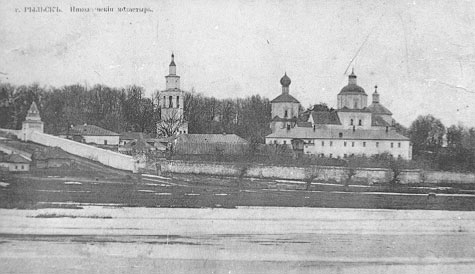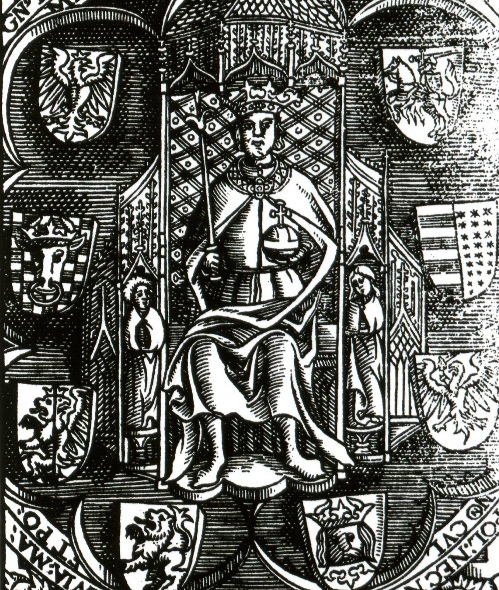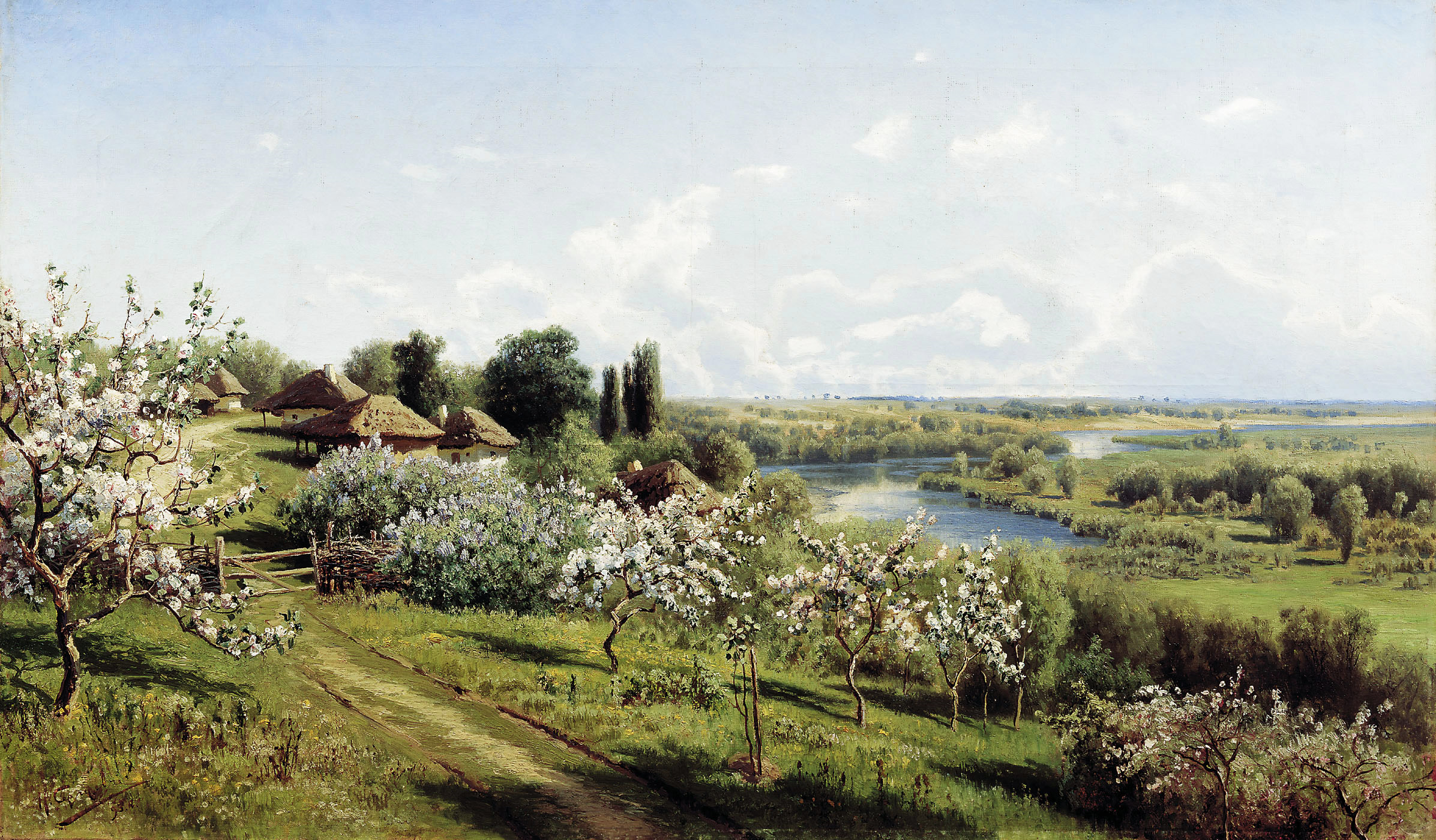|
Rylsk, Russia
Rylsk () is a town and the administrative center of Rylsky District in Kursk Oblast, western Russia, located on the right bank of the Seym River (Dnieper's basin) west of Kursk, the administrative center of the oblast. Population: 19,000 (1974). History Rylsk was first mentioned in a chronicle in 1152 as one of the Severian towns. It had become the seat of an appanage principality by the end of the 12th century before coming into the hands of Lithuanian rulers sometime in the late 13th or early 14th century. The Polish king Casimir IV made a grant of it to Dmitry Shemyaka's son Ivan, who had settled in Lithuania. Ivan's son Vasily defected to the Grand Duchy of Moscow, but Lithuanians held the town until 1522. During the Time of Troubles, it was one of the first towns to welcome False Dmitry I as the Tsar. After Ukraine's integration into the Russian Empire, Rylsk capitalized on the trade between Little Russia and Great Russia. Numerous merchants resided in the ... [...More Info...] [...Related Items...] OR: [Wikipedia] [Google] [Baidu] |
Kursk Oblast
Kursk Oblast (, ) is a federal subjects of Russia, federal subject of Russia (an oblast). Its administrative center is the types of inhabited localities in Russia, city of Kursk. As of the 2021 Russian census, 2021 census, Kursk Oblast had a population of 1,082,458. History The territory of Kursk Oblast has been populated since the end of the Last Glacial Period, last ice age. Slavic tribes of the Severians inhabited the area. From 830 the current Kursk Oblast was part of the Rus' Khaganate and Kievan Rus' states. The oldest towns in the region are Kursk and Rylsk, Russia, Rylsk, first mentioned in 1032 and 1152, respectively, both capitals of small medieval eponymous duchies. In the 13th century, the region was Mongol invasion of Kievan Rus', conquered by the Mongol Empire. In the 15th century it was part of the Grand Duchy of Lithuania under the Jagiellonian dynasty. It was lost in the 16th-century Muscovite–Lithuanian Wars to the Grand Duchy of Moscow. A real growth of t ... [...More Info...] [...Related Items...] OR: [Wikipedia] [Google] [Baidu] |
Casimir IV Jagiellon
Casimir IV (Casimir Andrew Jagiellon; ; Lithuanian: ; 30 November 1427 – 7 June 1492) was Grand Duke of Lithuania from 1440 and King of Poland from 1447 until his death in 1492. He was one of the most active Polish-Lithuanian rulers; under him, Poland defeated the Teutonic Knights in the Thirteen Years' War and recovered Pomerania. The Jagiellonian dynasty became one of the leading royal houses in Europe. The great triumph of his reign was bringing Prussia under Polish rule. The rule of Casimir corresponded to the age of "new monarchies" in western Europe. By the 15th century, Poland had narrowed the distance separating it from Western Europe and became a significant power in international relations. The demand for raw materials and semi-finished goods stimulated trade, producing a positive balance, and contributed to the growth of crafts and mining in the entire country. He was a recipient of the English Order of the Garter (KG), the highest order of chivalry and the most ... [...More Info...] [...Related Items...] OR: [Wikipedia] [Google] [Baidu] |
German Army (Wehrmacht)
The German Army (, 'army') is the land component of the armed forces of Federal Republic of Germany, Germany. The present-day German Army was founded in 1955 as part of the newly formed West German together with the German Navy, ''Marine'' (German Navy) and the German Air Force, ''Luftwaffe'' (German Air Force). , the German Army had a strength of 63,047 soldiers. History Overview A German army equipped, organized, and trained following a single doctrine and permanently unified under one command was created in 1871 during the unification of Germany under the leadership of Prussia. From 1871 to 1919, the title ''German Army (German Empire), Deutsches Heer'' (German Army) was the official name of the German land forces. Following the German defeat in World War I and the end of the German Empire, the main army was dissolved. From 1921 to 1935 the name of the German land forces was the ''Reichswehr, Reichsheer'' (Army of the Realm) and from 1935 to 1945 the name ''German Army (We ... [...More Info...] [...Related Items...] OR: [Wikipedia] [Google] [Baidu] |
World War II
World War II or the Second World War (1 September 1939 – 2 September 1945) was a World war, global conflict between two coalitions: the Allies of World War II, Allies and the Axis powers. World War II by country, Nearly all of the world's countries participated, with many nations mobilising all resources in pursuit of total war. Tanks in World War II, Tanks and Air warfare of World War II, aircraft played major roles, enabling the strategic bombing of cities and delivery of the Atomic bombings of Hiroshima and Nagasaki, first and only nuclear weapons ever used in war. World War II is the List of wars by death toll, deadliest conflict in history, causing World War II casualties, the death of 70 to 85 million people, more than half of whom were civilians. Millions died in genocides, including the Holocaust, and by massacres, starvation, and disease. After the Allied victory, Allied-occupied Germany, Germany, Allied-occupied Austria, Austria, Occupation of Japan, Japan, a ... [...More Info...] [...Related Items...] OR: [Wikipedia] [Google] [Baidu] |
Ukrainian State
The Ukrainian State (), sometimes also called the Second Cossack Hetmanate, Hetmanate (), was an Anti-communism, anti-Bolshevik government that existed on most of the modern territory of Ukraine (except for Western Ukraine) from 29 April to 14 December 1918. It was installed by German Empire, German military authorities after the socialist-leaning Central Council of Ukraine, Central Council of the Ukrainian People's Republic was dispersed on 28 April 1918. The Ukrainian State was governed by Pavlo Skoropadskyi, the hetman of all Ukraine, who outlawed all socialist-oriented political parties, creating an Anti-communism, anti-Bolshevik front with the Russian State. It collapsed in December 1918, when Skoropadskyi was deposed and the Ukrainian People's Republic returned to power in the form of the Directorate of Ukraine, Directorate. History Background As a result of the Bolshevik aggression, the government of the Ukrainian People's Republic that initially pursued anti-m ... [...More Info...] [...Related Items...] OR: [Wikipedia] [Google] [Baidu] |
Ukrainian–Soviet War
The Ukrainian–Soviet War () is the term commonly used in post-Soviet Ukraine for the events taking place between 1917 and 1921, nowadays regarded essentially as a war between the Ukrainian People's Republic and the Bolsheviks (Russian SFSR and Ukrainian SSR). The war ensued soon after the October Revolution when Lenin dispatched Antonov's expeditionary group to Ukraine and Southern Russia. Soviet historiography viewed the Bolshevik victory as the liberation of Ukraine from occupation by the armies of Western and Central Europe (including that of Poland). Conversely, modern Ukrainian historians consider it a failed war of independence by the Ukrainian People's Republic against the Bolsheviks. The conflict was complicated by the involvement of the Revolutionary Insurgent Army of Ukraine, non-Bolshevik Russians of the White Army, and the armies of the Second Polish Republic, Austria-Hungary, and the German Empire, among others. Historiography In Soviet historiography and termi ... [...More Info...] [...Related Items...] OR: [Wikipedia] [Google] [Baidu] |
Soviet Russia
The Russian Soviet Federative Socialist Republic (Russian SFSR or RSFSR), previously known as the Russian Socialist Federative Soviet Republic and the Russian Soviet Republic, and unofficially as Soviet Russia,Declaration of Rights of the laboring and exploited people, article I. was a socialist state from 1917 to 1922, and afterwards the largest and most populous constituent republic of the Soviet Union (USSR) from 1922 to 1991, until becoming a sovereign part of the Soviet Union with priority of Russian laws over Union-level legislation in 1990 and 1991, the last two years of the existence of the USSR.The Free Dictionary Russian Soviet Federated Socialist Republic . Encyclopedia2.thefreedictionary.com. Retrieved on 22 June 2011. The Russi ... [...More Info...] [...Related Items...] OR: [Wikipedia] [Google] [Baidu] |
Great Russia
Great Russia, sometimes Great Rus' ( , ; , ; , ), is a name formerly applied to the territories of "Russia proper", the land that formed the core of the Grand Duchy of Moscow and later the Tsardom of Russia. This was the land to which the ethnic Russians were native and where the ethnogenesis of (Great) Russians took place. The name is said to have come from the Greek language, Greek or (). From 1654 to 1721, Russian Tsars adopted the word – their official title included the wording (literal translation): "The Sovereign of all Rus (region), Rus': the Great, the Little, and Belarus, the White". The term is mentioned in the opening lines of the State Anthem of the Union of Soviet Socialist Republics: "Unbreakable Union of freeborn Republics Great Russia has welded forever to stand!" (or lit. "An unbreakable union of free republics, Great Russia has sealed forever"). Similarly, the terms Great Russian language (, ) and Great Russians (, ) were employed by ethnographers an ... [...More Info...] [...Related Items...] OR: [Wikipedia] [Google] [Baidu] |
Little Russia
Little Russia, also known as Lesser Russia, Malorussia, or Little Rus', is a geographical and historical term used to describe Ukraine. At the beginning of the 14th century, the patriarch of Constantinople accepted the distinction between what it called the eparchies of ''Megalē Rosiia'' () and ''Mikrà Rosiia'' (). The jurisdiction of the latter became the metropolis of Halych in 1303. The specific meaning of the adjectives "Great" and "Little" in this context is unclear. It is possible that terms such as "Little" and "Lesser" at the time simply meant geographically smaller and/or less populous, or having fewer eparchies. Another possibility is that it denoted a relationship similar to that between a homeland and a colony (just as "Magna Graecia" denoted a Greek colony). The name went out of use in the 15th century as distinguishing the "Great" and "Little" was no longer necessary since the Russian Orthodox Church based in Moscow was no longer tied to Kiev. However, with ... [...More Info...] [...Related Items...] OR: [Wikipedia] [Google] [Baidu] |
Pereyaslav Articles
The Pereyaslav Articles (, ) were concluded on 27 October 1659 between Yurii Khmelnytsky, the son of Bohdan Khmelnytsky, and the Russian tsar. The treaty was an aftermath of the Treaty of Hadiach on 16 September 1658 between the Cossacks and the Polish–Lithuanian Commonwealth, which granted many privileges to Cossacks and thus threatened Russian influence over them. The articles imposed severe restrictions on Cossack Hetmanate's autonomy. Terms Under the new articles, the Zaporozhian Cossacks were not allowed to conduct any foreign policy, including military alliances.Pereiaslav Articles of 1659 at the The ... [...More Info...] [...Related Items...] OR: [Wikipedia] [Google] [Baidu] |
Tsar
Tsar (; also spelled ''czar'', ''tzar'', or ''csar''; ; ; sr-Cyrl-Latn, цар, car) is a title historically used by Slavic monarchs. The term is derived from the Latin word '' caesar'', which was intended to mean ''emperor'' in the European medieval sense of the term—a ruler with the same rank as a Roman emperor, holding it by the approval of another emperor or a supreme ecclesiastical official—but was usually considered by Western Europeans to be equivalent to "king". Tsar and its variants were the official titles in the First Bulgarian Empire (681–1018), Second Bulgarian Empire (1185–1396), the Kingdom of Bulgaria (1908–1946), the Serbian Empire (1346–1371), and the Tsardom of Russia (1547–1721). The first ruler to adopt the title ''tsar'' was Simeon I of Bulgaria. Simeon II, the last tsar of Bulgaria, is the last person to have held this title. Meaning in Slavic languages The title tsar is derived from the Latin title for the Roman emperors, ''c ... [...More Info...] [...Related Items...] OR: [Wikipedia] [Google] [Baidu] |
False Dmitry I
False Dmitry I or Pseudo-Demetrius I () reigned as the Tsar of all Russia from 10 June 1605 until his death on 17 May 1606 under the name of Dmitriy Ivanovich (). According to historian Chester S.L. Dunning, Dmitry was "the only Tsar ever raised to the throne by means of a military campaign and popular uprisings". He was the first, and most successful, of three impostors who claimed during the Time of Troubles to be the youngest son of Ivan the Terrible, tsarevich Dmitry Ivanovich, who supposedly escaped a 1591 assassination attempt when he was eight years old. It is generally believed that the real Dmitry of Uglich died in Uglich in 1591. False Dmitry claimed that his mother, Maria Nagaya, anticipated the assassination attempt ordered by Boris Godunov and helped him escape to a monastery in the Tsardom of Russia, and the assassins killed somebody else instead. He said he fled to the Polish–Lithuanian Commonwealth after he came to the attention of Boris Godunov, who order ... [...More Info...] [...Related Items...] OR: [Wikipedia] [Google] [Baidu] |







